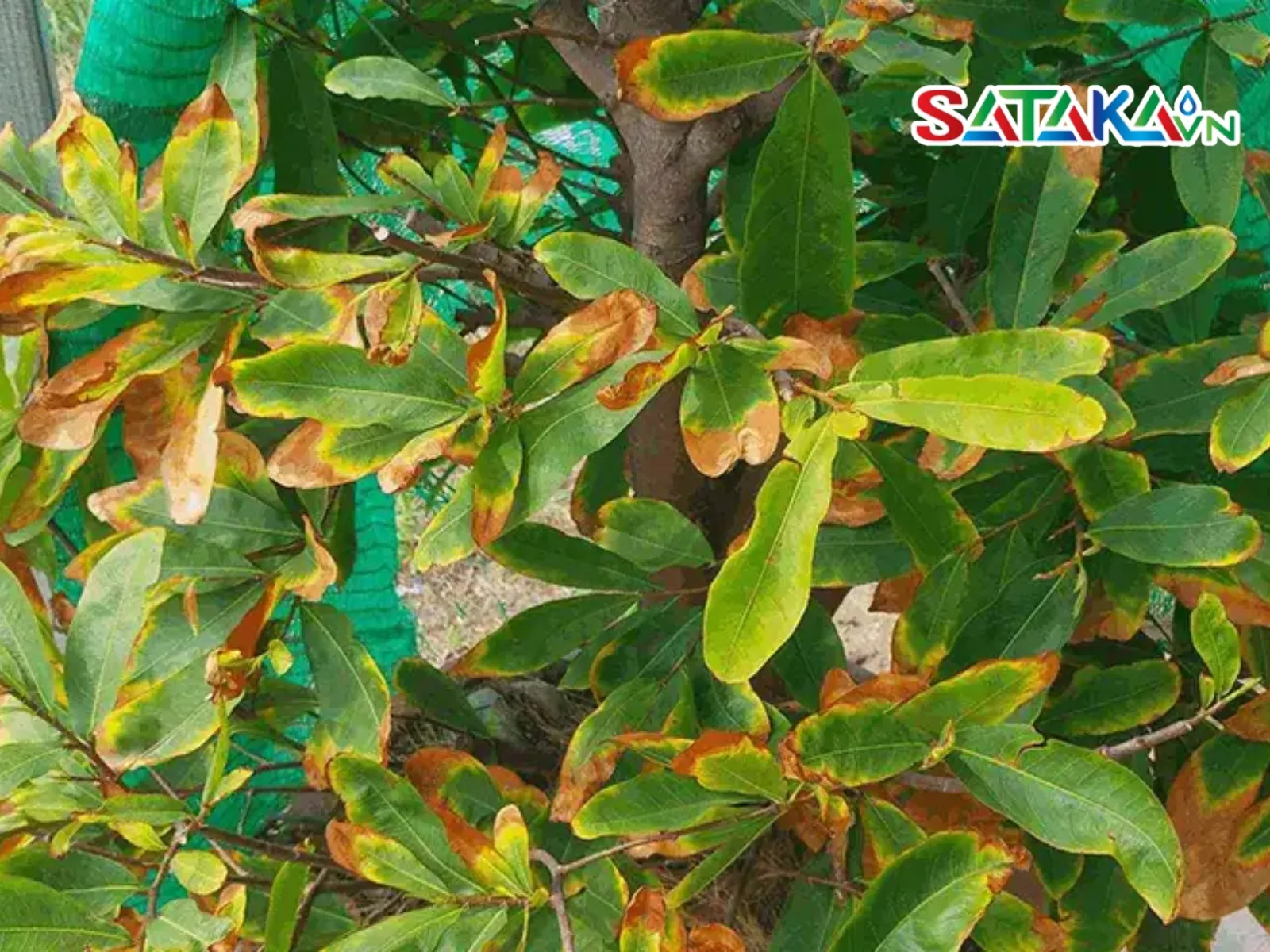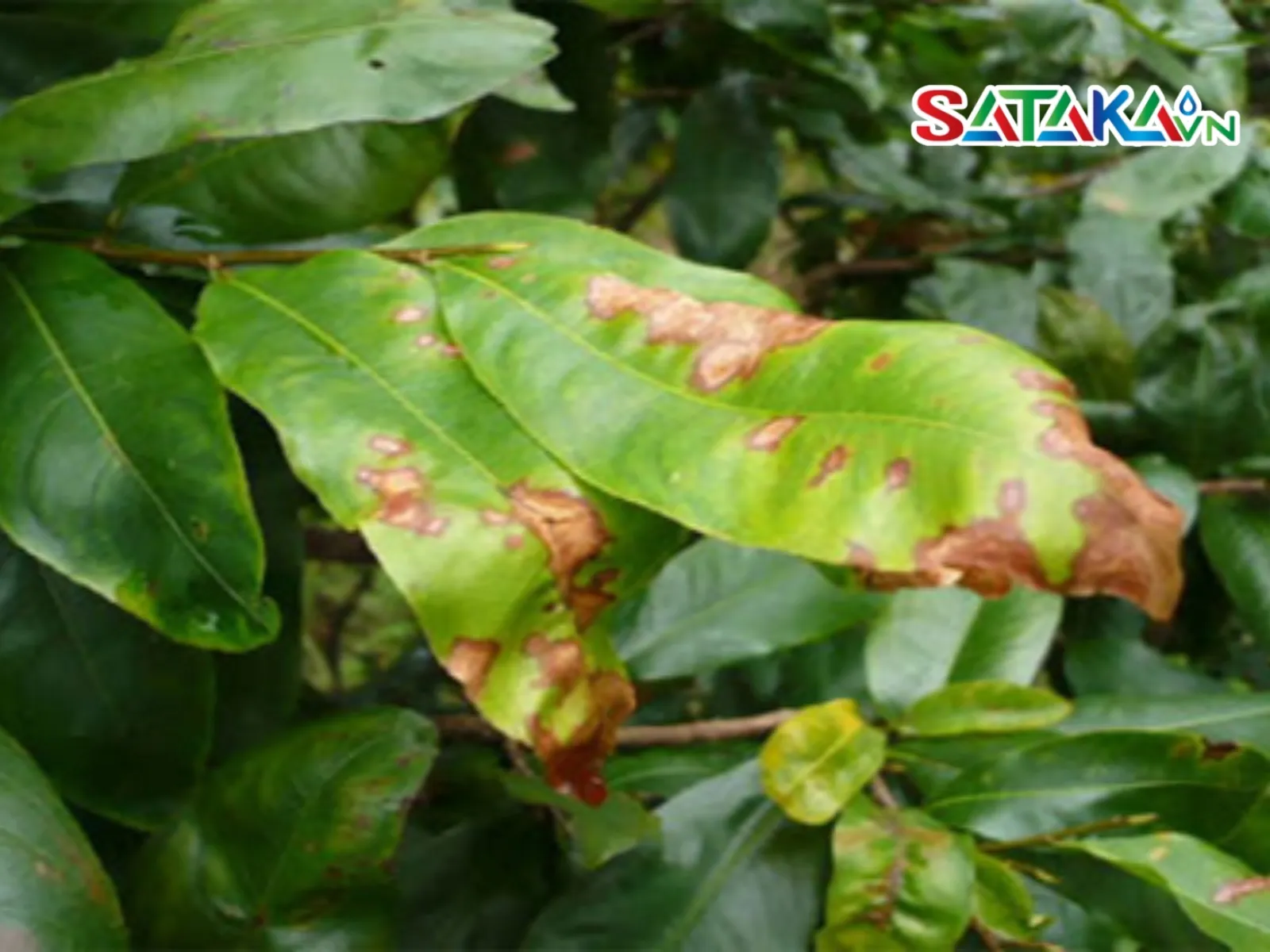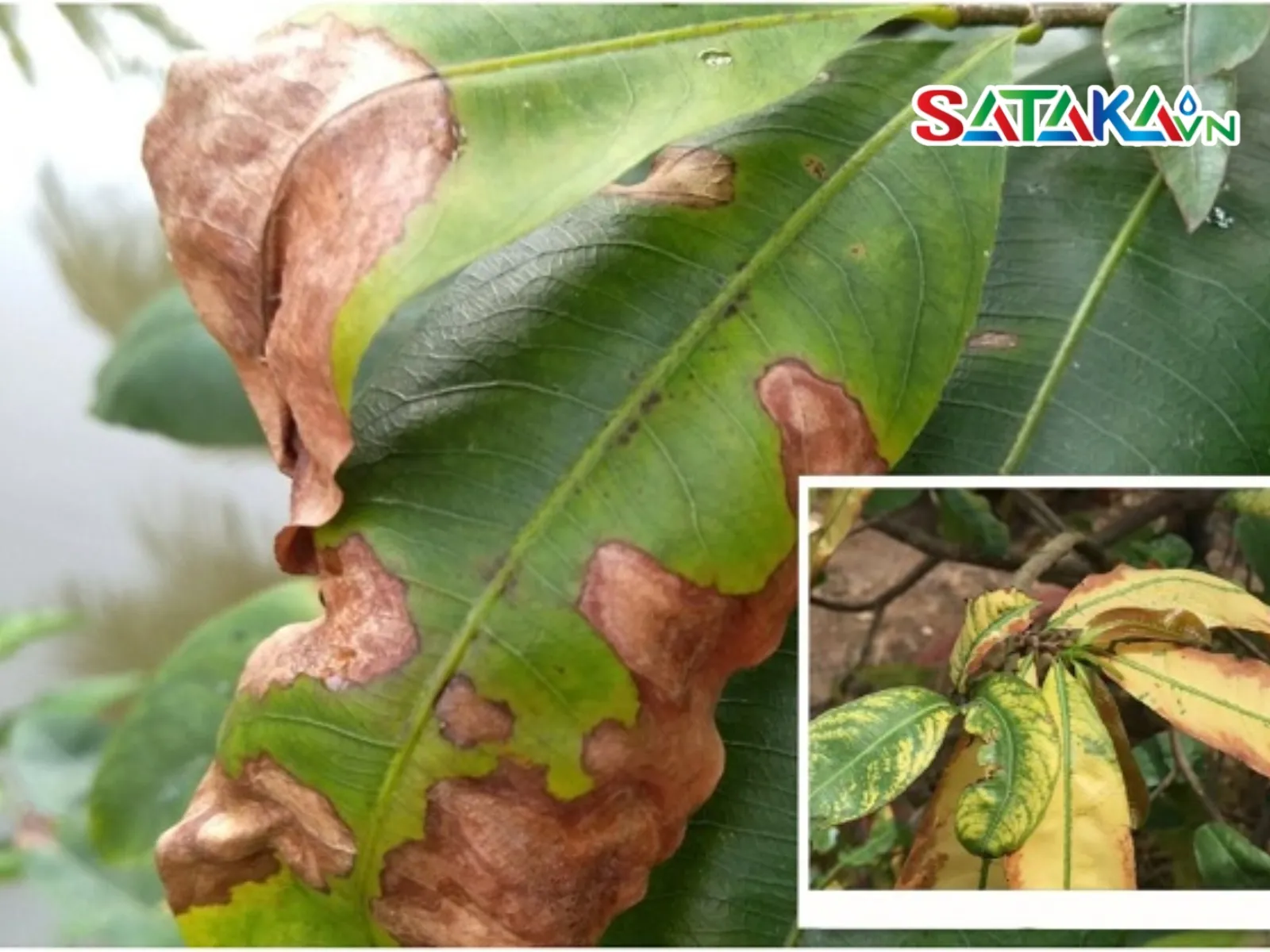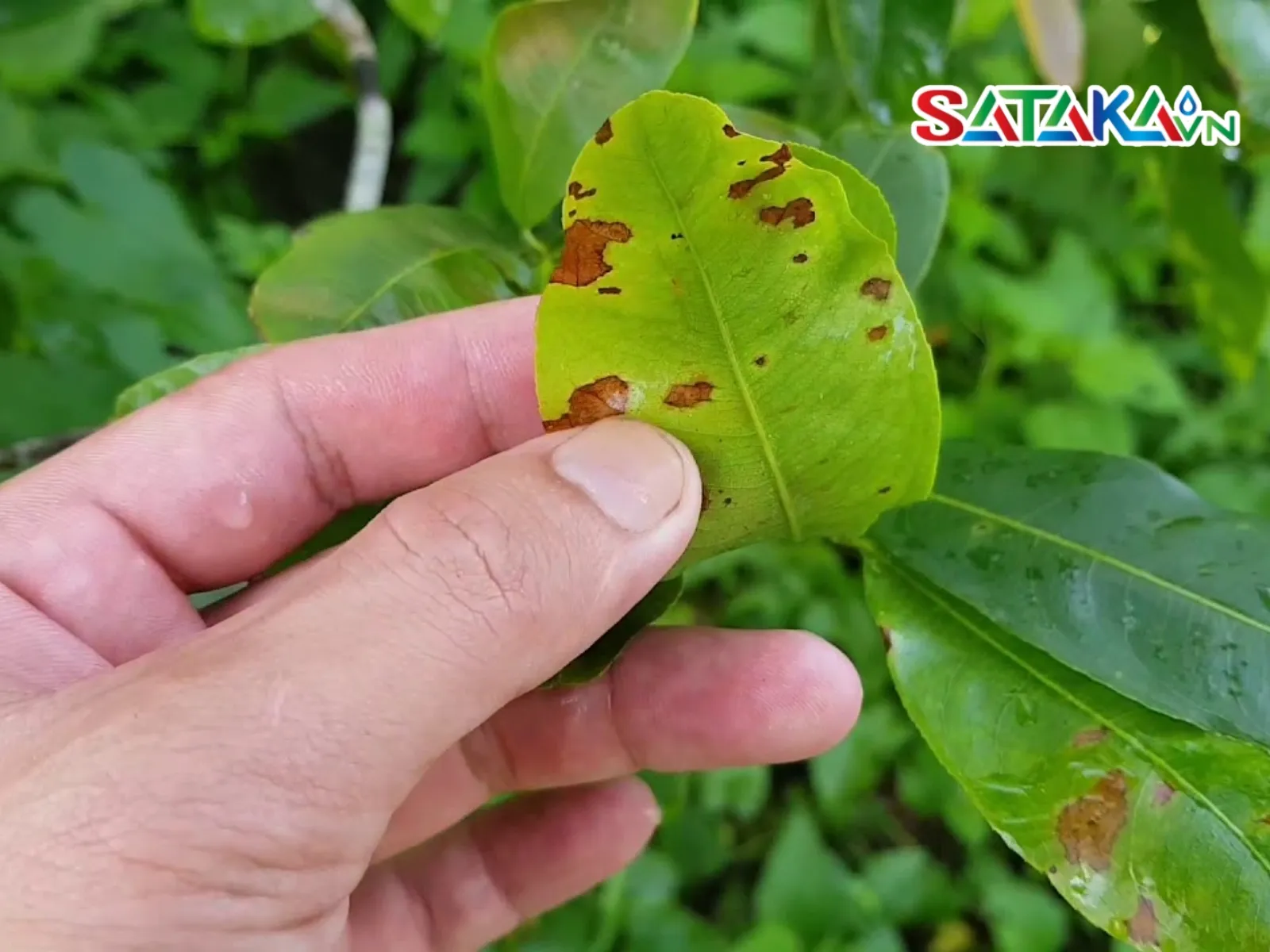Leaf blight on yellow apricot affects the health and beauty of the tree. Understanding the causes and how to prevent and treat them helps protect apricot trees to grow green and healthy.
Leaf Blight Disease On Yellow Apricot
Leaf blight in yellow apricot trees is a common concern among growers, especially as the yellow apricot tree is a symbol of luck and prosperity in Vietnamese culture. However, understanding the causes, symptoms, and effective preventive measures can help protect your trees from leaf blight, ensuring they stay lush and healthy year-round.
1. Causes of Leaf Blight in Yellow Apricot Trees
Leaf blight in yellow apricot trees can arise from various factors, severely impacting tree health. Key causes include:
- Excessive Fertilization: Over-fertilizing or improper application can lead to nutrient shock, causing leaves to scorch and wilt. Fertilizers with high salt content increase water loss in the plant, resulting in leaf burn.
- Thrip Infestation: Thrips are harmful insects that attack yellow apricot trees by piercing and sucking sap from the leaves. This causes the leaves to curl, wilt, and turn brown or black, leading to leaf blight.
- Fungal Infection: Fungal pathogens are a common cause of leaf blight. Humid and poorly ventilated environments provide ideal conditions for fungal growth. Fungal infections typically start as spots on the leaves that spread, leading to leaf scorch.
- Heat Stress: Intense heat, especially in summer, is a natural cause of leaf blight. Prolonged exposure to sunlight without adequate water can cause leaves to dry out and scorch from the edges inward.

Causes of leaf blight in apricot trees
2. Symptoms of Leaf Blight in Yellow Apricot Trees
Identifying the early symptoms of leaf blight can help growers take timely action to minimize damage. Common symptoms include:
- Yellowing and Drying Leaves: Initial signs include yellowing edges on the leaves, which gradually spread inward until the leaves dry out completely. This is often caused by water stress or prolonged exposure to sunlight.
- Brown or Black Spots: Fungal infections manifest as small brown or black spots on the leaf surface. These spots enlarge and spread, causing significant damage.
- Leaf Curl and Deformation: Thrip attacks cause leaves to curl, deform, and lose their healthy green color. Affected leaves may develop gray or silver streaks and lose their sheen.
- Premature Leaf Drop: Severe leaf blight results in premature leaf drop, leaving the tree sparse and weakened, directly impacting its health and growth.

Signs of leaf blight disease on yellow apricot trees
3. Conditions Favoring Leaf Blight Development
Leaf blight in yellow apricot trees tends to thrive under certain conditions, particularly related to the environment and care practices:
- High Temperature and Humidity: Fungal pathogens flourish in hot and humid weather, especially during late dry seasons and early rainy seasons. Warm temperatures combined with high humidity create an ideal environment for diseases like anthracnose, pink fungus, and rust to attack yellow apricot trees.
- Nutrient-Deficient Soil: Trees planted in compacted or nutrient-poor soil, particularly in pots, are more susceptible to diseases. Nutrient deficiencies weaken the tree, reducing its ability to resist pathogens.
- Sudden Weather Changes: Rapid shifts between rainy and sunny conditions during late autumn or the rainy season can stress trees, making them vulnerable to leaf blight. Poor soil quality and sudden environmental changes further weaken the tree’s defenses.
- Improper Care: Some growers avoid fertilizing to control tree size, but this practice can lead to nutrient deficiencies, leaving the tree weak and prone to disease. Stunted growth or improperly pruned trees are more susceptible to leaf blight.

Conditions for leaf blight development
4. Preventing and Treating Leaf Blight in Yellow Apricot Trees
Below are specific measures to protect your yellow apricot trees from leaf blight:
4.1 Cultural Practices
- Regularly replace soil and provide adequate nutrients for potted trees. Use well-aerated, well-draining soil to prevent waterlogging and fungal infections.
- Water trees appropriately in the early morning or late afternoon, avoiding overwatering or underwatering. Prolonged soil moisture should be avoided as it promotes fungal growth.
- Prune diseased leaves and branches regularly to improve air circulation. Keep the area around the base of the tree clean by removing plant debris to reduce the spread of fungal pathogens.
4.2 Biological Measures
- Use beneficial microorganisms like Bacillus subtilis to suppress and eliminate fungal pathogens. This environmentally friendly method protects the tree without harming the ecosystem or human health.
- Apply herbal biological solutions, such as garlic, chili, or neem extracts, to prevent leaf blight. These natural remedies have antifungal properties and help keep trees healthy without using chemicals.
4.3 Disease Control Measures
- Spray preventive fungicides at the start of the rainy season and the end of the dry season to prevent leaf blight outbreaks. Copper-based fungicides or those containing Mancozeb or Difenoconazole are effective against fungal infections.
- Regularly inspect leaves and branches for early signs of disease. Isolate and treat affected trees promptly to prevent the disease from spreading.
- Use fertilizers with micronutrients and balanced nutrients, particularly organic fertilizers, to strengthen the tree’s resistance and support healthy growth.

How to prevent and treat leaf blight on apricot trees
Leaf blight in yellow apricot trees can pose a significant threat if not detected and treated promptly. Understanding the causes and symptoms and implementing cultural, biological, and preventive measures are crucial for effective disease management. Regular care and monitoring are essential to ensure healthy tree growth and vibrant blooms.
Stay updated with Sataka for more valuable insights into crop care and disease prevention. Visit our website or contact us for detailed guidance on protecting and enhancing your yellow apricot trees.



